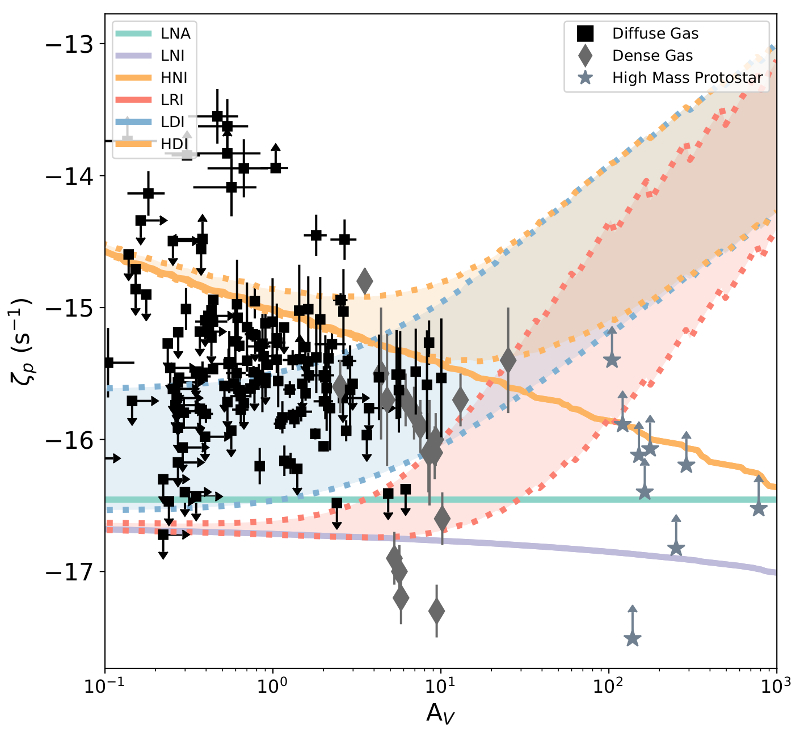
|
EPoS |
|
EPoS Contribution
|
|
The Astrochemical Impact of Cosmic Rays in Protostellar Clusters
Brandt Gaches U Koeln, Cologne, DE | |
| We present a modified version of the public photo-dissociation region (PDR) code, 3D-PDR, which includes the treatment of cosmic ray (CR) attenuation in-situ. The new code takes as an input the CR spectrum at the boundary and solves for the energy losses and ionization rate (CRIR) self-consistently with the chemistry. Figure 1 shows that models including CRs generated in the accretion shocks of protostars (HDI and LDI) are consistent with inferred CRIRs in diffuse and dense gas using H3+, OH+ and HNO+ and HCO+ and N2H+, respectively. These models naturally replicate the spread in the CRIR inferred in diffuse and dense gas. However, they produce higher ionization rates than previously predicted. The models and data rule out a low, constant ionization rate, ζ ≈ 10-17 s-1, used in some astrochemical applications. The spread can also be attributed to variations of the external CR flux, seen with the (L) and (H) models without internal sources (LNI, LNA, HNI). The CRIR is one of the fundamental parameters in any astrochemical model. We directly test well used calibrations such as the HCO+/N2H+ ratio with our suite of astrochemical models. We find that calibrations using H3+ are only accurate when CRs are dominant. We show that column density ratios are poor CRIR diagnostics. The modified version of 3D-PDR is now available to the public. | |
 | |
| Caption: The CRIR versus Av into the cloud for six different CR models. Data points indicate observations from diffuse and dense gas and the cores of high mass protostars. Models with internal sources (LRI, LDI, HDI) and those without (LNI, HNI). The LNA model represents a constant ζ = 3×10-17 s-1. | |
| Collaborators: S. Offner, U Texas, US T. Bisbas, U Koeln, DE |
Key publication
Suggested Session: Cosmic Rays |